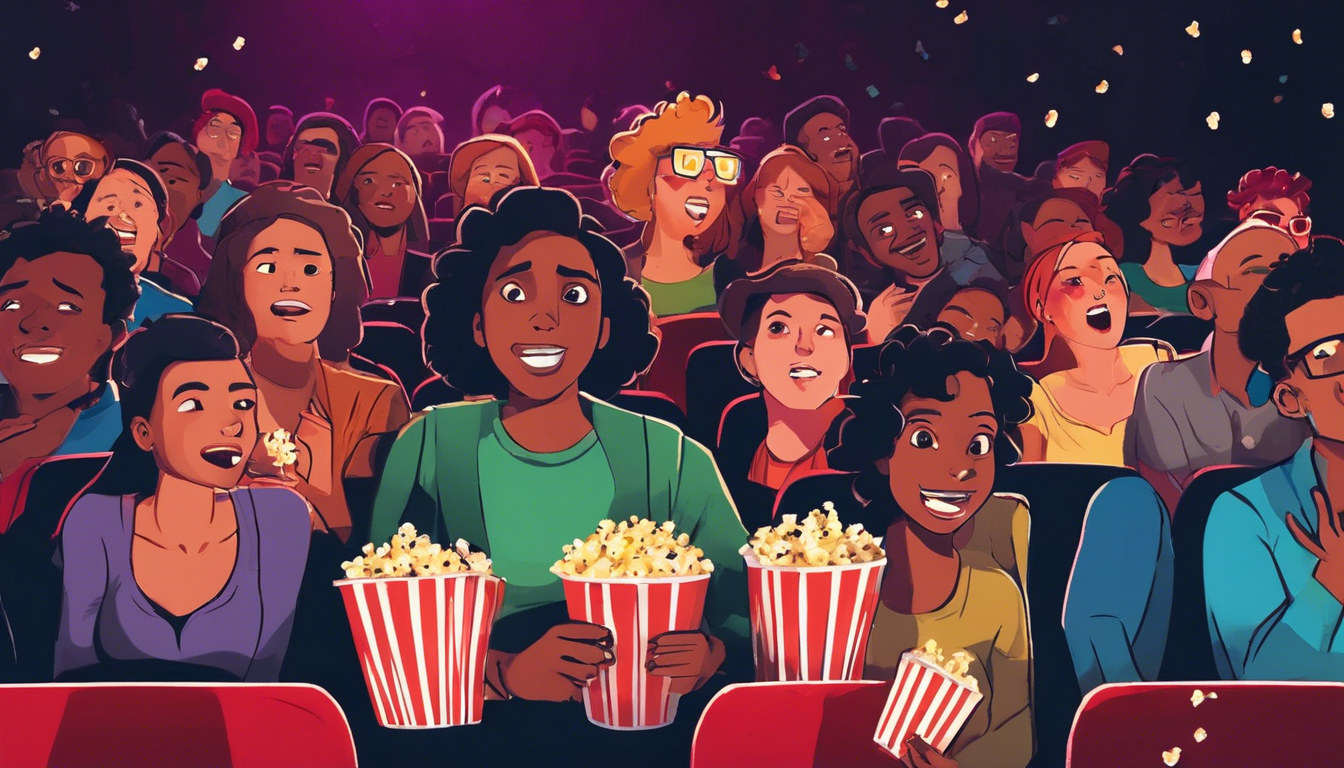
Welcome, screenwriters and filmmakers, to the quirky world of sentiment analysis!
If you’ve ever wondered what folks really think about your cinematic masterpiece—or if that ‘auteur’ title is just a clever disguise for ‘my mom liked it’—you’re in for a treat.
This article mangles the magical realm of sentiment analysis for film critiques, demystifying how this dazzling tool can help you crack the secret code behind audience reactions.
So grab your popcorn, put on your thinking caps (even if they say ‘I heart Netflix’), and let’s explore how understanding emotions can take your storytelling from ‘meh’ to ‘whoa!’.
The BEST AI Screenwriting Tool On The Market!
Key Takeaways
- Sentiment analysis provides valuable insights into audience reactions to films.
- Understanding viewer sentiment can significantly enhance film critique accuracy.
- Sentiment analysis utilizes data-driven methods to evaluate film success.
- Real-world case studies demonstrate the effectiveness of sentiment analysis in film evaluations.
- The film industry faces challenges in sentiment analysis but is evolving to integrate new technologies.
Introduction to Sentiment Analysis in Film Critiques
Welcome, aspiring screenwriters and filmmakers, to the magical realm of sentiment analysis for film!
Imagine a world where your precious cinematic baby doesn’t just languish in obscurity but is dissected and analyzed by the enchanting algorithms of sentiment analysis—those modern-day crystal balls of movie criticism!
Sentiment analysis for film takes a deep dive into the emotional spectrum of audience reactions, revealing not just whether viewers loved or loathed your latest masterpiece, but the *why* behind those feelings.
So, strap on your virtual reality goggles and prepare to embark on a wondrous journey into reviews, social media chatter, and analytics dashboards that can make or break your film’s fate in this volatile industry.
Think of sentiment analysis as that sharp-eyed editor who not only cuts the fluff but tells you just how your film made people feel—because knowing is half the battle in the game of celluloid success!
The Importance of Understanding Audience Reactions
When it comes to crafting that next blockbuster, don’t just throw in a few explosions and a quirky sidekick and call it a day!
Understanding audience reactions is not just a skill; it’s an art form that can be enhanced through sentiment analysis for film.
Think of it as your trusty crystal ball — well, if that crystal ball had a data scientist’s hat and a box of popcorn in one hand!
By leveraging sentiment analysis, filmmakers can decode the emotional responses of viewers toward characters, story arcs, and even those inexplicable plot twists that leave the audience scratching their heads.
Imagine creating a film that resonates on a deep emotional level, all because you were armed with insights on how your audience feels!
It’s like having a backstage pass to the concert of their hearts, where you can harmonize your narrative to hit all the right notes.
So next time you’re penning your screenplay or orchestrating scenes, remember, understanding audience reactions through sentiment analysis isn’t just important — it’s your ticket to creating cinematic masterpieces that are not only seen but also felt!
‘The audience is always right.’ – A famous principle in show business that underscores the importance of understanding audience sentiment.
How Sentiment Analysis Works in Film Evaluation
Ah, sentiment analysis for film – the modern-day crystal ball for screenwriters and filmmakers that’s not merely for divining the mood of the masses but an essential tool in shaping your cinematic masterpiece!
Imagine having a magical ability to sift through mountains of reviews, comments, and social media chatter, all to uncover what viewers are truly feeling about your reel baby.
How does this wizardry work, you ask?
Well, it’s like giving your film an emotional check-up!
Sentiment analysis leverages natural language processing (NLP) to decode the emotional essence behind words.
It categorizes feedback into positive, negative, and neutral sentiments, while also identifying key themes and recurrent phrases that might just reveal the secret sauce or the sour note of your storytelling.
So whether your character’s quirky charm received rave reviews or your plot twist unraveled like a poorly knit sweater, sentiment analysis for film helps you to fine-tune every scene, dialogue, and jump scare, turning cinematic frowns upside down!
Embrace this tech-savvy sorcery, and elevate your storytelling from mere script to felt experience.
The BEST AI Screenwriting Tool On The Market!
Case Studies: Successful Implementation of Sentiment Analysis
Ah, sentiment analysis for film—the unsung hero in the filmmaker’s toolkit!
Imagine being equipped with the superpower to decode audience feelings with the precision of an emotional spy.
In recent years, industry moguls have harnessed sentiment analysis to transform the way films are created, marketed, and even critically received.
Take, for instance, the case of a certain blockbuster that had a lackluster initial audience reception—using sentiment analysis, the filmmakers detected a wave of dissatisfaction regarding a specific character.
Rather than letting it flop, they reworked some scenes in post-production, resulting in a massive turnaround that left both critics and audiences swooning!
Another shining example is a quirky indie film that employed sentiment analysis during their marketing phase.
By gauging social media sentiment, they pinpointed which aspects of their film resonated with viewers, leading to a targeted promotional strategy that turned their modest budget into gold.
So, my fellow screenwriters and filmmakers, next time you sit down with your trusty laptop, consider sprinkling in some sentiment analysis for film into your creative concoction and watch those box office magic beans grow!
Challenges and Limitations of Sentiment Analysis in Film
Let’s get real for a moment, my dear filmmakers and screenwriting aficionados.
As the world of cinema dives headfirst into the deep end of technology, one shiny new tool that’s making waves is sentiment analysis for film.
It’s like having a crystal ball that tells you how audiences are reacting to your screenplay or the latest cinematic masterpiece.
But hold your horses, because while this tech sounds like it could turn your indie flick into a box office blockbuster, it comes with its own set of challenges and limitations that deserve a spotlight.
First off, let’s talk about the fact that sentiment analysis for film often struggles with context.
I mean, what happens when a perfectly well-intentioned line of dialogue is delivered so poorly that it evokes laughter instead of tears?
AI can easily throw a tantrum in such situations, miscalculating emotional responses faster than you can say ‘focus group.’ Then there’s the matter of cultural nuances—let’s be real, sarcasm is often lost in translation, and your film could end up being rated as ‘sad’ in a culture where humor is king!
So while sentiment analysis for film promises to be a magical compass guiding you toward audience approval, it’s essential to remember that it’s just one piece of the puzzle, and you need the passionate human touch to navigate the choppy waters of cinematic storytelling.







